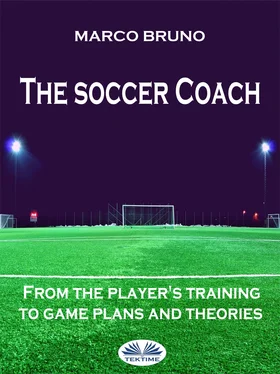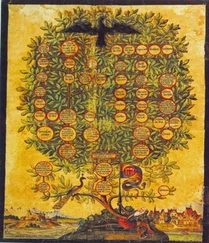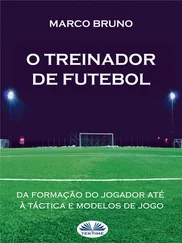Marco Bruno - The Soccer Coach
Здесь есть возможность читать онлайн «Marco Bruno - The Soccer Coach» — ознакомительный отрывок электронной книги совершенно бесплатно, а после прочтения отрывка купить полную версию. В некоторых случаях можно слушать аудио, скачать через торрент в формате fb2 и присутствует краткое содержание. ISBN: , Жанр: unrecognised, на английском языке. Описание произведения, (предисловие) а так же отзывы посетителей доступны на портале библиотеки ЛибКат.
- Название:The Soccer Coach
- Автор:
- Жанр:
- Год:неизвестен
- ISBN:978-8-87-304550-2
- Рейтинг книги:5 / 5. Голосов: 1
-
Избранное:Добавить в избранное
- Отзывы:
-
Ваша оценка:
- 100
- 1
- 2
- 3
- 4
- 5
The Soccer Coach: краткое содержание, описание и аннотация
Предлагаем к чтению аннотацию, описание, краткое содержание или предисловие (зависит от того, что написал сам автор книги «The Soccer Coach»). Если вы не нашли необходимую информацию о книге — напишите в комментариях, мы постараемся отыскать её.
The Soccer Coach — читать онлайн ознакомительный отрывок
Ниже представлен текст книги, разбитый по страницам. Система сохранения места последней прочитанной страницы, позволяет с удобством читать онлайн бесплатно книгу «The Soccer Coach», без необходимости каждый раз заново искать на чём Вы остановились. Поставьте закладку, и сможете в любой момент перейти на страницу, на которой закончили чтение.
Интервал:
Закладка:
Coachability is a dynamic parameter depending on internal and external personal factors. It can manifest itself in different ways in the various functional and organic systems of the same subject. In the infancy and adolescence age, the so-called "sensitive phases" (Martin, 1982) play a key role, namely they are those periods of growth that are particularly conducive to the development and formation of decisive skills and abilities for the motor-sport performance. By applying all the principles of training, you must prepare a work program that fits the players who have to perform it and the type of game the coach intends to set. The coach must always keep in mind the question "what should I do and at when".
So let us clarify what they are:
- the principles of learning (how the player learns);
- the principles of teaching (how the coach should teach).
The main aim must be to induce positive changes in behavior and lifestyle habits. Human behavior differs in:
innate actions, which we must not learn and do not require any prior experience;
discovered actions, which we discover by ourselves through a personal process as try-error-try again;
assimilated actions, which we acquire from other individuals with an unconscious emulation process;
actions learned, which must be taught and require a voluntary effort, based on a precise analytical observation.
The principles of learning
The statement that "if a soccer player trains, he improves and perfects his skills" is not true at all, because training determines behaviors and adaptations whether it is conducted in an appropriate way or an inadequate one. Not all adaptations and behaviors are useful for the realization of the different sports activities.
Effective training and equally effective learning in soccer are much related to the formation of proper attitudes, habits and movements.
First, in order of importance, it is the attitude towards learning, both by the coach and by the player. This attitude should be characterized by two qualities:
- open mind;
- very eager mind.
Essential mental attitudes to receive and evaluate new ideas and to apply them, to constantly question yourself; more simply to update continuously.
Not all ideas are good, so it is a mistake to immediately accept a new idea based on the only novelty criterion, as it is a mistake not to give it credit without evaluating it.
Some sports require predominantly the care of the technical aspects, others of the athletic ones: soccer is a sport where judgment predominates.
This conclusion is reached with a simple analysis:
- a soccer match lasts 90 minutes;
- the ball is in play for about 60 minutes;
- within 60 minutes each team is assumed to have possession of the ball for at least 30 minutes;
- during these 30 minutes the ball is often in the air and out of reach of players;
- on average every single player can not have the ball possession for more than 2 or 3 minutes.
After this analysis a question is spontaneous:
What does the player do in the other 57- 58 minutes when the ball is in play?
The answer is:
He applies his judgment skills, makes decisions and makes choices.
We also note that soccer is one of the most varied sports, both because players and the ball can move across the field, and because the rules to be respected are few; we understand that situations change rapidly and require speed of execution and concentration by the players. All this brings us back to the fundamental problem that is not how to train, but rather how a soccer player learns.
To stimulate players successfully, the coach should consider the following factors:
1) the interest: the player who is not interested and motivated dedicates little effort to the proposed activities.
2) enthusiasm: the player who lacks enthusiasm is not useful to himself and to the group.
3) collaboration: working together with the group to achieve common purpose.
4) example: watching playing champions or better watching the right gaming actions; by using video footage you can improve learning, attitudes and habits.
5) training frequency: training quality is more important than frequency. If there is quality, the more time it will be devoted to training the better the improvements will be.
6) awareness of improvements: those who get good improvements are more willing to train. In a well-trained workout, players are aware of the progress they have reached.
7) competitiveness: to develop your skills you need a continuous search for overcoming your skills and limitations. Players will improve if more and more challenging tasks are assigned them, provided that they are not too difficult.
8) trust: coaches should teach the players to have confidence, but above all should encourage them in cultivating achievable hopes and ambitions.
Having determined how the player learns, we need to determine what he needs to learn in soccer training.
The soccer training areas are four:
- technique and tactics (coordination skills);
- physical condition (conditional skills);
- understanding (what to do and what not to do);
- psycho-social condition (behaviors).
1) Technique and tactics: they are the tools of the craft; the better they are the more effective, useful and surprising the achieved results will be.
2) Physical Condition: skills are not achievable unless they are accompanied by a good physical condition. This will be the predominant topic of our lessons.
3) Understanding: it consists in understanding what can be done and what needs to be done and distinguishes the good player from the others under the same physical and tactical condition. Doing something you know you cannot do is as serious as doing something right at the wrong time.
Understanding requires:
- Knowledge of game principles and rules;
- Intuition of what's going to happen;
- Decision of choice on what is best to do;
- Perception of space and time;
- Action, ready and immediate execution of what you chose.
4) The psycho-social condition: Knowing how to stay within a group (team), accepting diversity (skills, behaviors, physical abilities, experiences ...) working together to achieve common purpose is an indispensable condition for completing the others.
Before beginning the treatment of the basic elements for achieving a good physical condition it is necessary to briefly outline how the coach should teach and the principles on which an effective training action is based.
The principles of learning
The principles or rules of sports teaching are used to make optimal the methodical ability of action of coaches and athletes. These principles refer to all aspects and tasks of teaching, which determine contents, methods and organization.
1) Knowing the subject: you need to know soccer from a technical and tactical point of view, the principles of physical preparation, not being influenced by external and environmental factors, generally emotional and prevent the players from being affected.
2) Knowing how to learn: without knowing the principles of learning that we have listed before you cannot make a profitable workout.
3) Knowing the key factors of teaching: the key factors of teaching are:
a) purpose: it concerns objectives that are usually in the medium and long term, for example the improvement of the team's offense game or the improvement of force. Short-term goals emerge from the purpose.
b) objectives: they concern:
- the game with the ball (passages, controls, triangulations, etc.);
- the game without the ball (combined movement, support actions, crossed actions, etc.).
You cannot teach everything at once, but determine an order of priority and a logical sequence of training.
Читать дальшеИнтервал:
Закладка:
Похожие книги на «The Soccer Coach»
Представляем Вашему вниманию похожие книги на «The Soccer Coach» списком для выбора. Мы отобрали схожую по названию и смыслу литературу в надежде предоставить читателям больше вариантов отыскать новые, интересные, ещё непрочитанные произведения.
Обсуждение, отзывы о книге «The Soccer Coach» и просто собственные мнения читателей. Оставьте ваши комментарии, напишите, что Вы думаете о произведении, его смысле или главных героях. Укажите что конкретно понравилось, а что нет, и почему Вы так считаете.












